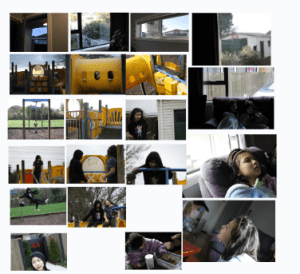
Level 3 History
🙂
8/02/2024
This site is not a reliable source of information, using ADAM we can discover this.
By scrolling down to the bottom of the site, we can see that the author of this article is Lyle Zapato.
15/02/2024
Text-Dependent Questions
- E & F
- A
- C
- D
20/02/2024
What does this source tell us?
- Why was it important for the government to have a licensing system on the goldfields
It was important for the government to have a licensing system on the goldfields because the licenses helped the government earn money while also being a way to keep track of miners. These licenses helped the government keep track of how many people were moving to previously mostly unpopulated areas. It also put some regulation on gold mining, whereas previously there were barely any rules, now if you were mining without a license, you would simply get arrested.
2. What were the main differences between the gold license and the miner’s right?
The miner’s rights were cheaper and gave political representation.
3. Which goldfield events or incidents were a reaction to the unfairness of the gold license?
In December 1854 est. 500 miners built and occupied a fortress known as Eureka Stockade. These miners heavily disliked the idea of a license, these miners burnt their licenses and all resisted government authority. Soldiers were sent by the government to attack the Eureka Stockade, this resulted in 22 miners being killed, and others arrested.
4. Why were these events or incidents significant?
These events and incidents were significant because these incidents shaped the culture and ways of mining then and now. Without these events, the gold license may have never been replaced with the miner’s right. These events showed that the miners wanted better treatment and that they wouldn’t give up.
22/02/2024
The Eureka Stockade was an event that took place on the 3rd of December 1854, this event occurred because miners were unhappy with how they were being treated. 300 soldiers and police attacked the Eureka Stockade, which resulted in 22 miners (including one woman), and five soldiers dying. The miners at the Eureka Stockade did not expect an attack as it was Sunday (the Christ’s Day). This resulted in the public sympathizing with the miners and pushing for change, resulting in the miner’s rights.
Essay: What were the impacts of the Victoria Gold Rush 27/02/2024
- Changes to the Law
- Migration
- Impact to First Peoples
There were many impacts due to the result of the Victoria Gold Rush, migration, changes to the law, and impact on first peoples. In the 1850s the discovery of gold in Victoria changed the course of Australian history,
Migration significantly impacted Australia during the Victoria Gold Rush, within a year of the gold rush an estimated 90,000 people migrated to Victoria to try and make a living off of the gold rush. The major population growth meant that Victoria was now a multi-cultural society that contained many people from different places and religions.
The Victoria Gold Rush also made major changes to the law. Australian working conditions had significant changes as a result of the Victoria Gold Rush.
Aboriginal people were impacted heavily by the Victoria Gold Rush. Their land was being destroyed by the gold miners, but many Aboriginal people worked with the settlers and integrated themselves into the world of the gold rush. Many traded supplies with miners, assisted lost miners through the lands, and some even became enforcers of the law, helping check gold licenses and protecting the law.
7/03/2024
Focus Questions
The impacts of the Otago Gold Rush on the pre-existing communities of Otago.
2.4 folio – Series and Sequences. 28/08/2023
In photography, I am currently working on my portfolio. My kaupapa is the fun/joy of my two nieces going outside and playing outside.
I am currently working on arranging my photographs around to correctly convey my kaupapa.
At this point in time, I have it arranged so that the top row of my folio is four photos capturing the view from inside, showing the view from the windows. (These photos are currently unedited).
The next three photos underneath, shows Roya, the first two outside and the third her laying down inside. We can see the leading lines lead you along the images. I have edited these images to have higher contrast and made other slight changes to the colour and lighting.
The bottom left image captures an angelic statue, with an orange tint throughout the whole image, on the bottom right we see my two nieces sitting on the couch, edited to have the same orange tint in the angel statue image. The angel statue helps portray the innocence and angelicness of these two kids. By putting these two together it helps portray the narrative.

These photos under here are currently not put on my board, I am planning to put a majority of these on my second panel and reshoot the in-betweens.

Edith Amituanai Study
Notes about Edith Amituanai’s photography.
- Very much based on realism, with no outlandish editing or effects, just the real world she lives in.
- Any alterations to colour do not heavily change the image, only enhance the colour already present.
- Simple angles, no drastic tilts or perspectives. Most photos are shot from a perspective that could easily be perceived as another person’s perspective, with someone else also present in the moment.
- She captures her subjects candidly, telling stories about these people through her photographs.
- Focusing on capturing the subjects without any direction, try not to have any influence on what your subjects are doing and capture the honest, real lives of the people in your life.
- Taking the surrounding environment into account, how does this change the feel and subject matter of your image.
How can I implement Edith Amituanai’s techniques into my photography?
I want to try to tell a narrative with my photos, a story or some sort of message. With my current folio piece, this narrative is about kids going outside to enjoy their time on the playground, then coming back inside to calm back down. We first see the view of the outside world from in, then we see the kids venture into the backyard and the playground, and last we see them back inside this time not looking out, but resting inside.
I should keep my photos relatively simple, not have many unnecessary distractions and keep the essential aspects as the main focus. I could take more wide-angled shots, and show more of the environment to give more context.


Folio First Reshoot – Windows
In this shoot, I was attempting to capture the idea of kids looking outside, anticipating the joy of playing outside and the excitement of the fresh air. I still would like to improve on these photos, although I am not quite sure how yet, perhaps I can be slightly more experimental with my shooting techniques.



My Peer Critique – Third Photoshoot
This is a peer critique of my third photo shoot, in this photoshoot, I attempted to emulate aspects of Ans Westra’s photography. I did this by trying to capture the pure unfiltered moments of life, making sure to not interfere with what my subjects are doing.
Peer Critique for Cody Weastell 3
In the photos shown, I did a peer critique with Cody Weastell. These photos have been digitally altered by Cody on Photoshop. I then critiqued these photos by giving feedback and stating what I thought he did well and what he could improve on.

This picture has two very juxtaposing portions, the left side has less saturated and dull colouring, while the right side has more saturated and brighter colouring. I like how the focus of the image is the pathway leading down to the centre of the image. Very busy image, colour-wise and just in general.

This image has predominantly less saturated colouring, with a few bits of blue spread throughout. I like how there are portions of the road missing from the image, leaving a lot of impactful negative space around the image. The reoccurring green throughout the image also helps provide some consistency. The trees in the background are also used effectively to create some varying proportions and uniqueness. The road is also used effectively to help give a sense of a warped perspective.

With this image, we can see clearly that the red building is the focal point of this image. I also like how the fence leads you from the left side to the right side of the image, and the different levels of exposure in certain parts of the photo make it stand out.
Overall
All of these images clearly emulate David Hockney’s style of photography. One suggestion I will make is that next time you should take a larger amount of photos, in order to be less constricted by the current ones you have, you could even take them on different days to create contrasting elements such as different weather, lighting, and other variables such as if a person is walking by, or an animal.
Tekau Waihanga Ngohe|Create Task 10 2.2/2.3 First folio series
I have begun my work on my portfolio piece for the level 2 photography assessment. At this point, I have been gathering photos I have taken previously and formatting them to form a rough series. I will have to perform multiple reshoots to perfect the folio.
So far I have the kaupapa of (simply put) my niece going outside and then coming back in. The first part I will reshoot is the photos of “looking outside from in” I will use framing and other techniques to my advantage to help portray this message.

